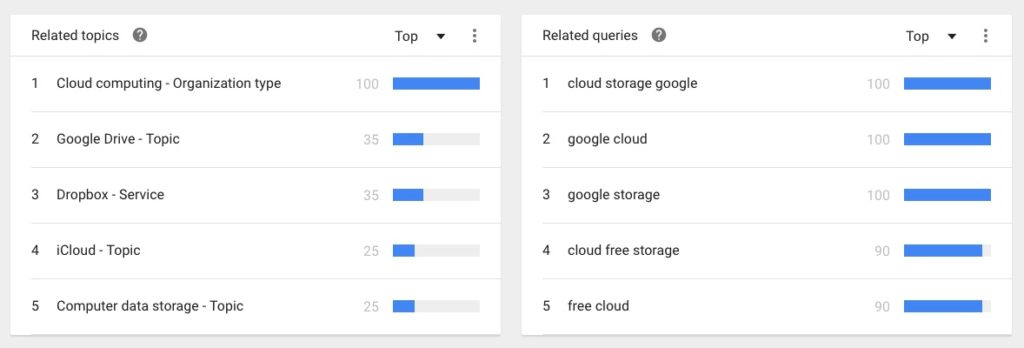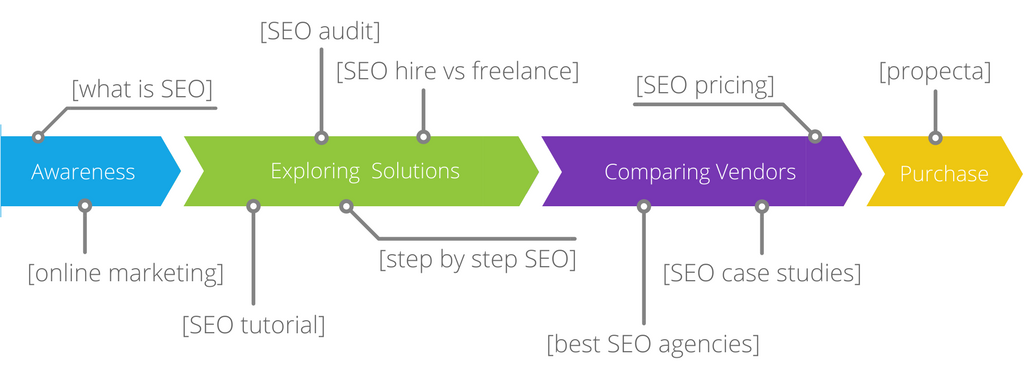SEO and Content Marketing: 3 Steps to a Content Calendar that Drives Results [Free Template]
What comes first – SEO or content? A lot of marketers are still asking this question (or assuming an answer), but it’s really the wrong question to ask.
SEO is not just technical considerations for setting up a website, or keyword strategies for after-the-fact content promotion. SEO efforts, like keyword and user intent research, can help build an effective content marketing strategy when considered from the very beginning. Whether you’re setting up the brand’s first content calendar, or overhauling one that isn’t driving results, let SEO help you create a content marketing calendar that improves brand awareness, generates and qualifies leads, and drives real ROI.
Get access to our free content calendar template at the bottom of this post to help you get started.
What’s a Content Calendar?
A content marketing calendar is a collaborative marketing resource that helps a team plan its content marketing strategy.

A content marketing calendar should include all planned content marketing assets (like blogs, email sends, and ebooks) alongside (optional) additional fields for comments, image assets, and other particulars. Additional slots on your content calendar might cover promotional tactics for planned content, like paid ads or influencer marketing.
A good content calendar is based on a modern SEO strategy. The research that goes into filling up a content calendar should be tied to keyword research, user intent, and other SEO best practices.
1. Use Keyword Research to Generate Ideas
Keyword research is the first step to generating content ideas with SEO value. Alongside user intent research, keyword research can also help with identifying trends that can bring relevant searchers to a website.
Sometimes marketers make incorrect assumptions about how their target customer is searching for them. For example, imagine someone is selling 3PL services. To this company, “3PL services” might seem like the optimal keyword, but decision makers may actually be using the term “logistics” more often.
There are several ways to generate a list of valuable keywords:
- Google Keyword Planner
- Google’s suggested searches
- Moz Open Site Explorer
- Google Trends
- Social media—Facebook groups, Twitter chats, etc.
- Customer service reps—They know what language your audience is and is not familiar with.
- Q&A websites—Sites like Quora, Yahoo! Answers, etc.

Google Trends suggestions for related topics and related queries for “cloud storage.”
Creating a list of keywords will help you understand how your target audience is talking about your brand/industry, and is the first step to creating an SEO-savvy content calendar. Once a list of keyword ideas has been created, it’s time to make sure you understand the user intent behind that language.
2. Go Beyond Keywords to the User’s Need
Keywords are useless without user intent analysis. User intent defines what a user is looking for when conducting a search query. Google defines queries in terms of four types of “micro-moments” to categorize user intent:
- Know—The user wants information. These are usually bigger-picture topics and ideas.
- Go—The user wants to navigate. These queries are important for location-based brands.
- Do—The user wants more detailed instructions for completing a specific task.
- Buy—The user is ready to make a purchase. This is often B2C, local SEO, but can also apply to bottom-of-funnel B2B queries.
Fill Column A of a spreadsheet with your list of keywords and start Googling them. Make some notes as you go:
- Do some similar keywords provide very similar results? Group those together in a keyword family, so you can use them in the same content.
- Which micro-moment are the Page 1 search results answering? Are they providing information, detailed steps, or sales/product pages? If there is a combination of micro-moment represented, get a feel for which one is most important.
- What kinds of content and titles are dominating the results? Are there a lot of infographics? Video? List titles? “How To” articles?
User intent research helps marketers understand why people search the way they do, and what they hope to find as a result. Armed with the results of keyword research and user intent research executed concurrently, you can then create/optimize content accordingly.
3. Set Up Your SEO-Savvy Content Calendar
Creating a body of effective content won’t happen automatically, which is where an organized content calendar can help.
When you’re ready to create your SEO content calendar, gather your ingredients:
- Keyword and user intent research
- Buyer personas
- Buyers’ journeys
- Website/existing content
First, map the important keywords—based on their user intent insights—to your buyers’ journeys. A short list of SEO keywords, for example, might fit on a buyer’s journey like this:

Then, compare those keyword/user intent combinations with your existing content. Note where you have content that answers the user’s need for the keyword, and where you do not. Existing content can be optimized. Gaps in content will need to be filled.
Finally, decide how often you want to post content on the brand blog, how often you can complete a new high-quality content resource or landing page, and how quickly you can optimize an existing piece of content. This will help you decide how far apart to space publication dates as you fill in the calendar with improved content and new pieces to answer all of your audience’s needs.
A Content Calendar that Drives SEO
An effective content calendar is strategic, but also flexible. It is accessible, but also fiercely guarded. For brands who are still just throwing content into a blog, any kind of content calendar is a huge leap forward. Get organized. Make a plan.
For brands who are ready to get strategic about a content marketing schedule that will drive brand awareness, generate and nurture leads, and create revenue, an SEO-based content calendar is the only way to go. It’s about speaking your audience’s language, and that’s the only way to really cut through the noise. Fill out the short form below for access to our exclusive SEO content marketing calendar template, and get started.
Download the Content Calendar Template:
What's Next?
Profound Strategy is on a mission to help growth-minded marketers turn SEO back into a source of predictable, reliable, scalable business results.
Start winning in organic search and turn SEO into your most efficient marketing channel. Subscribe to updates and join the 6,000+ marketing executives and founders that are changing the way they do SEO:
And dig deeper with some of our best content, such as The CMO’s Guide to Modern SEO, Technical SEO: A Decision Maker’s Guide, and A Modern Framework for SEO Work that Matters.







